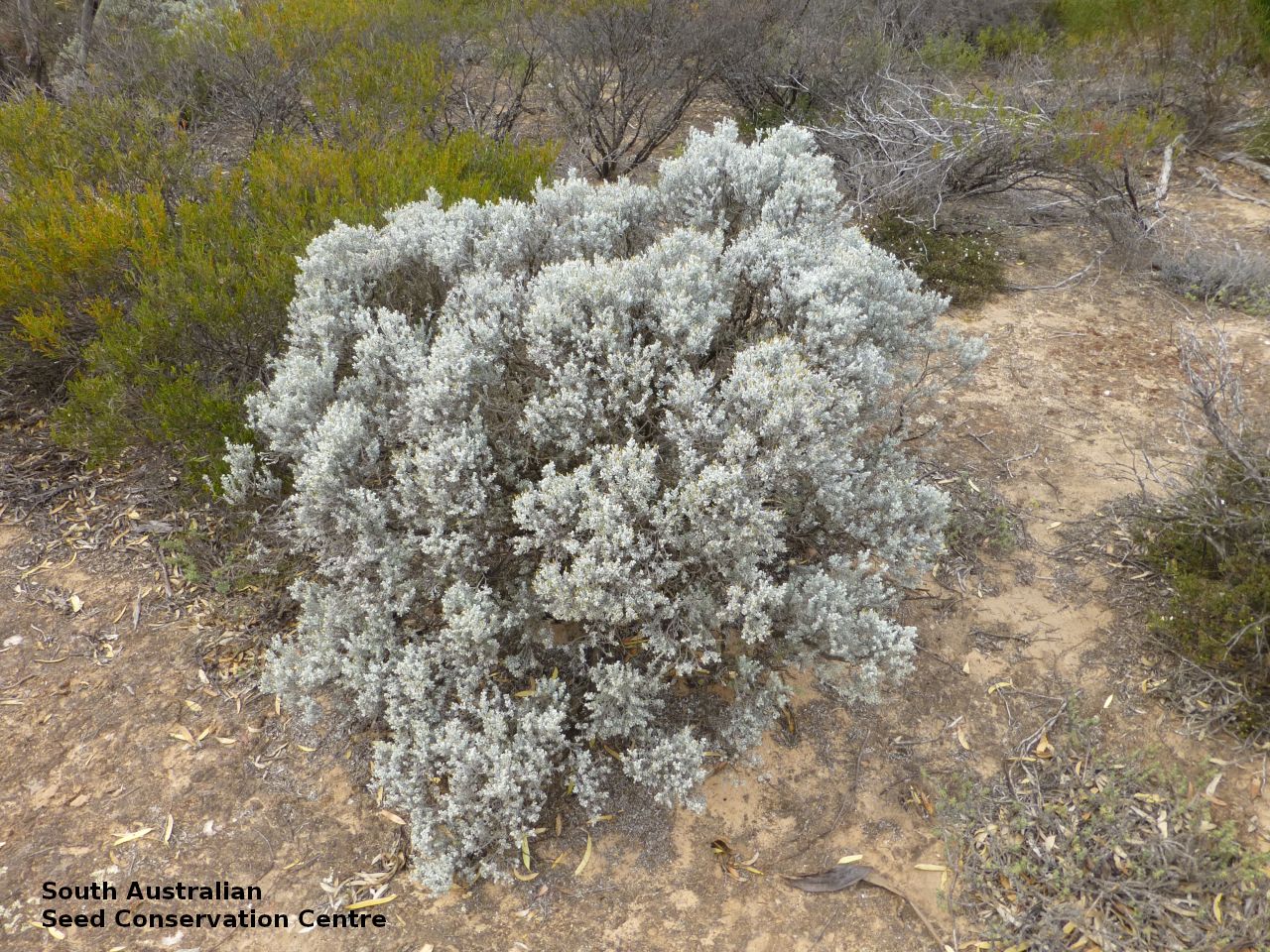
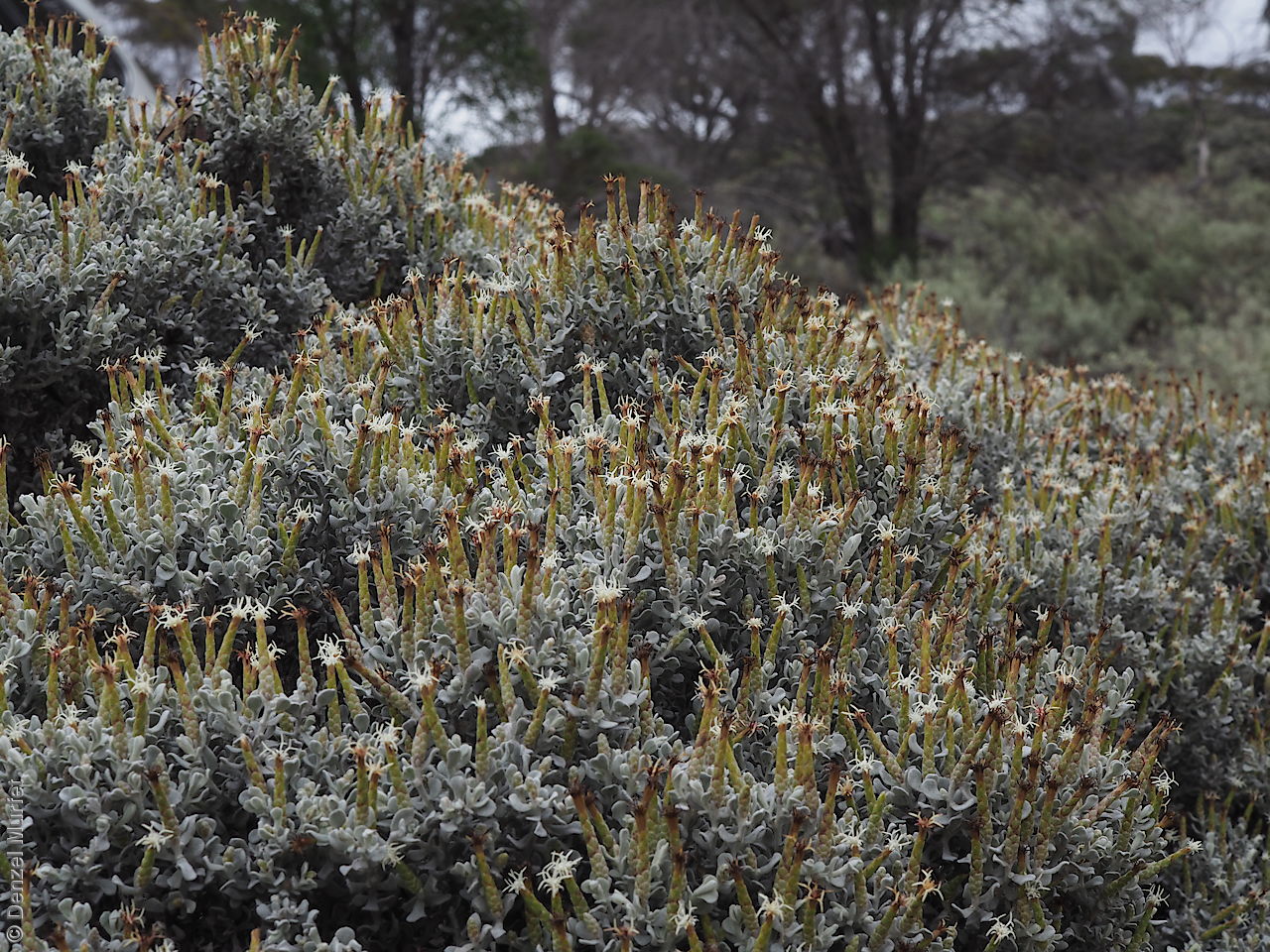
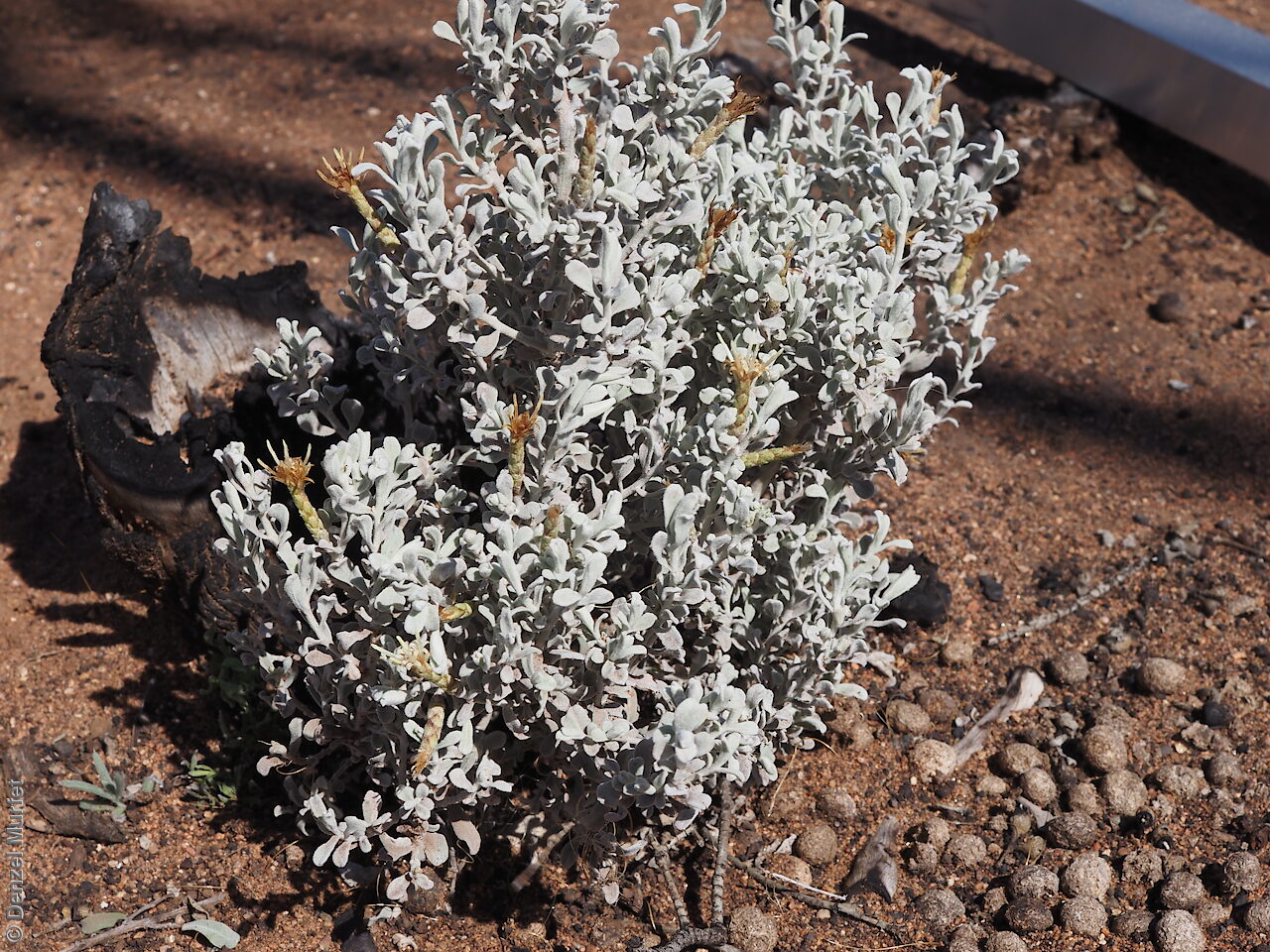
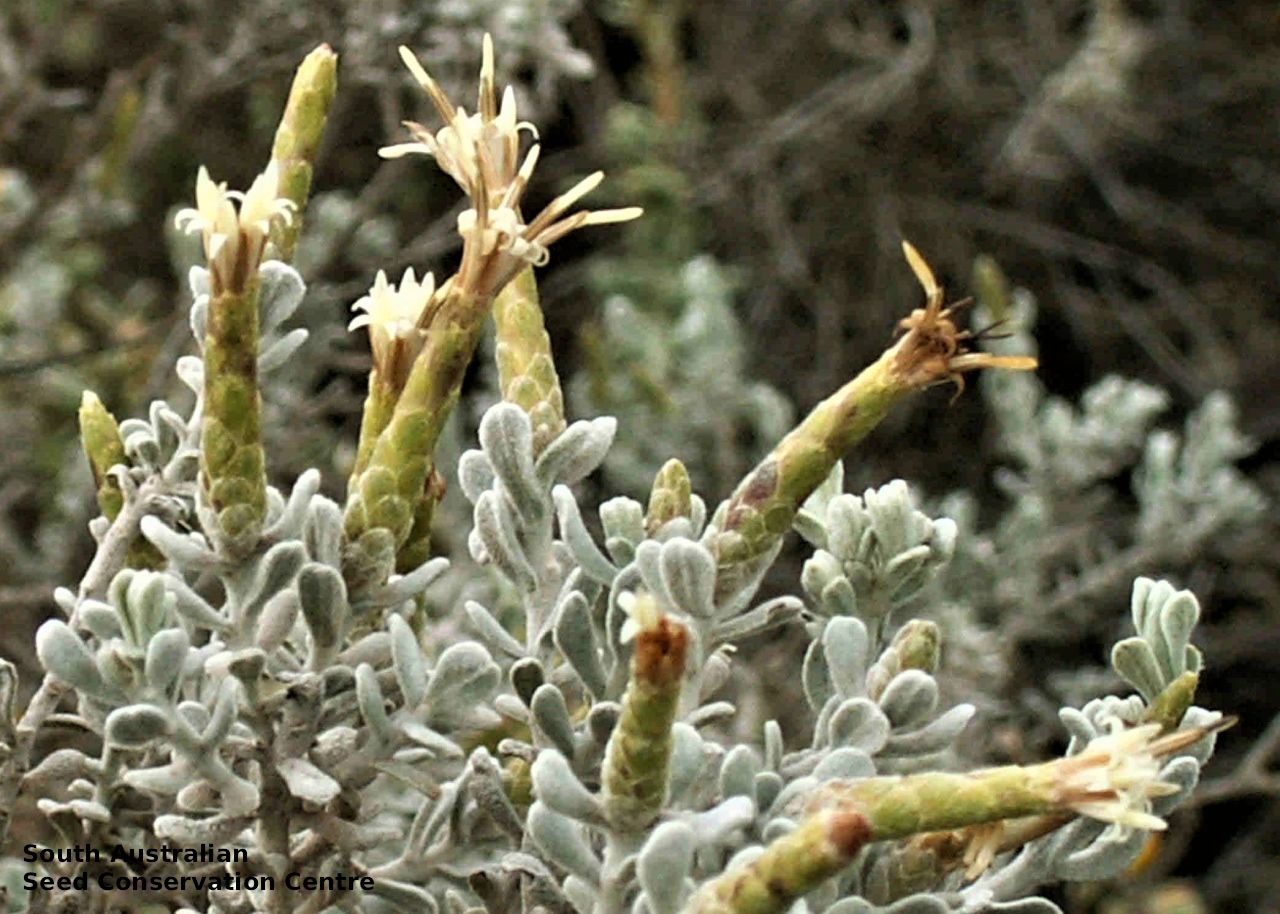

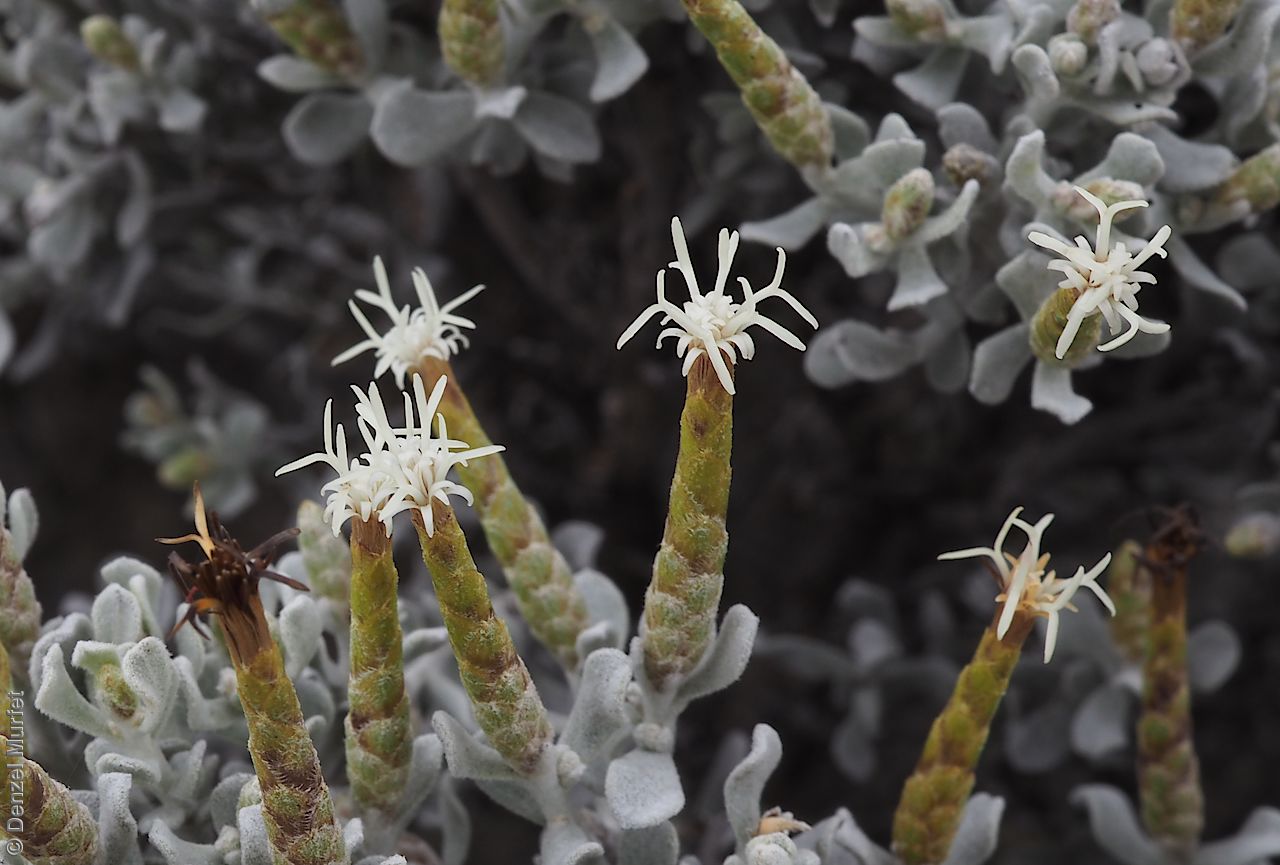

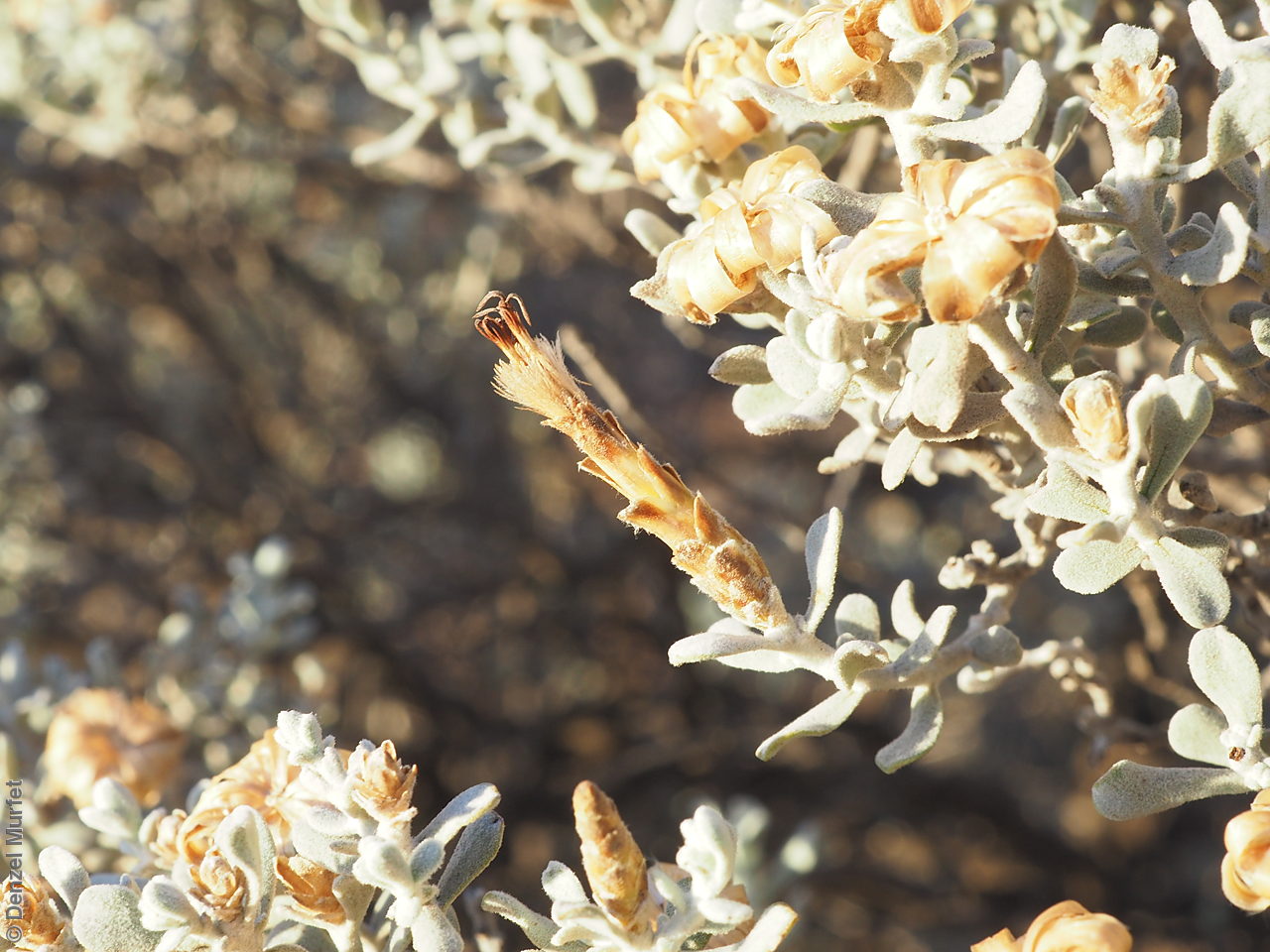
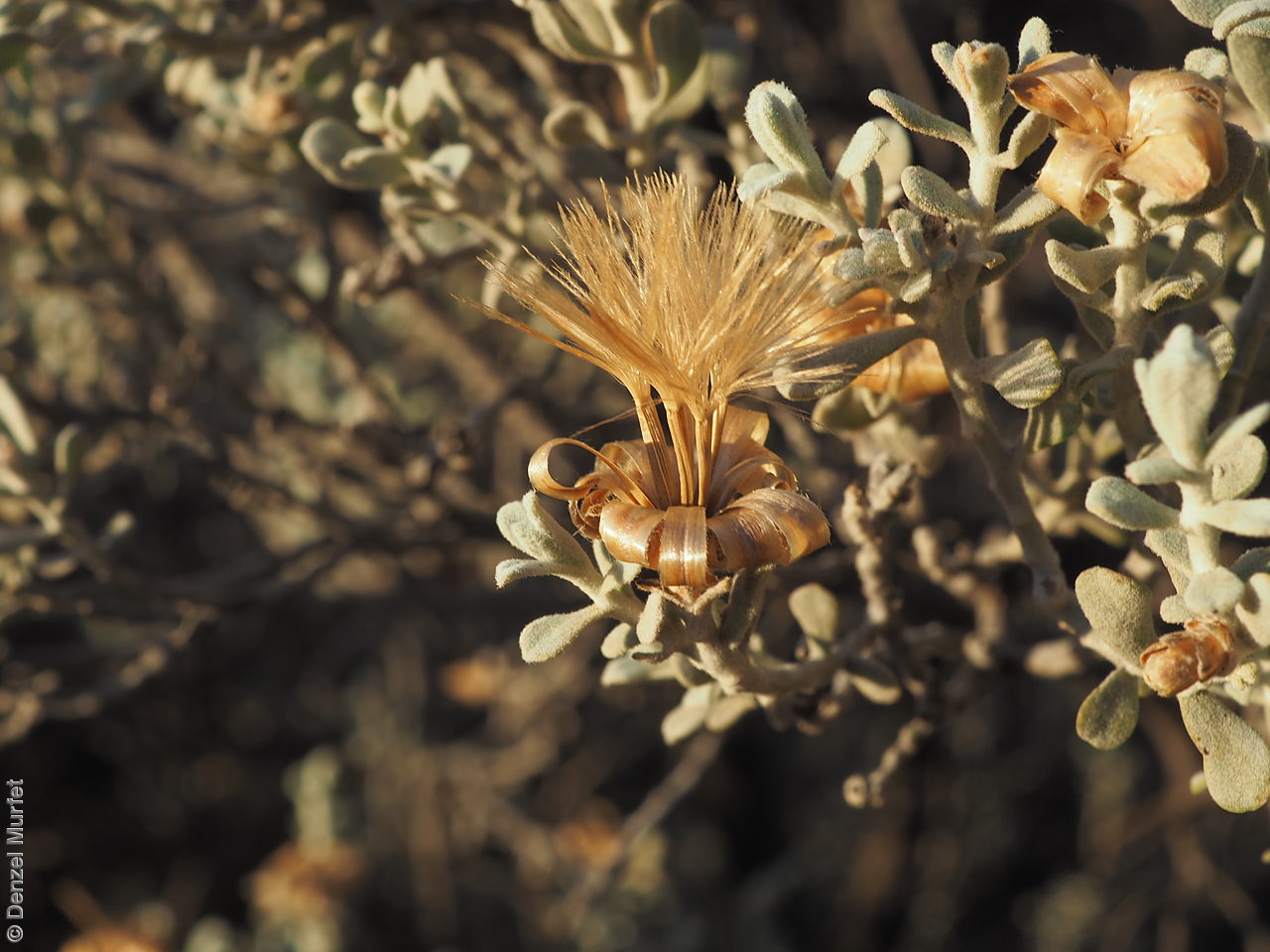


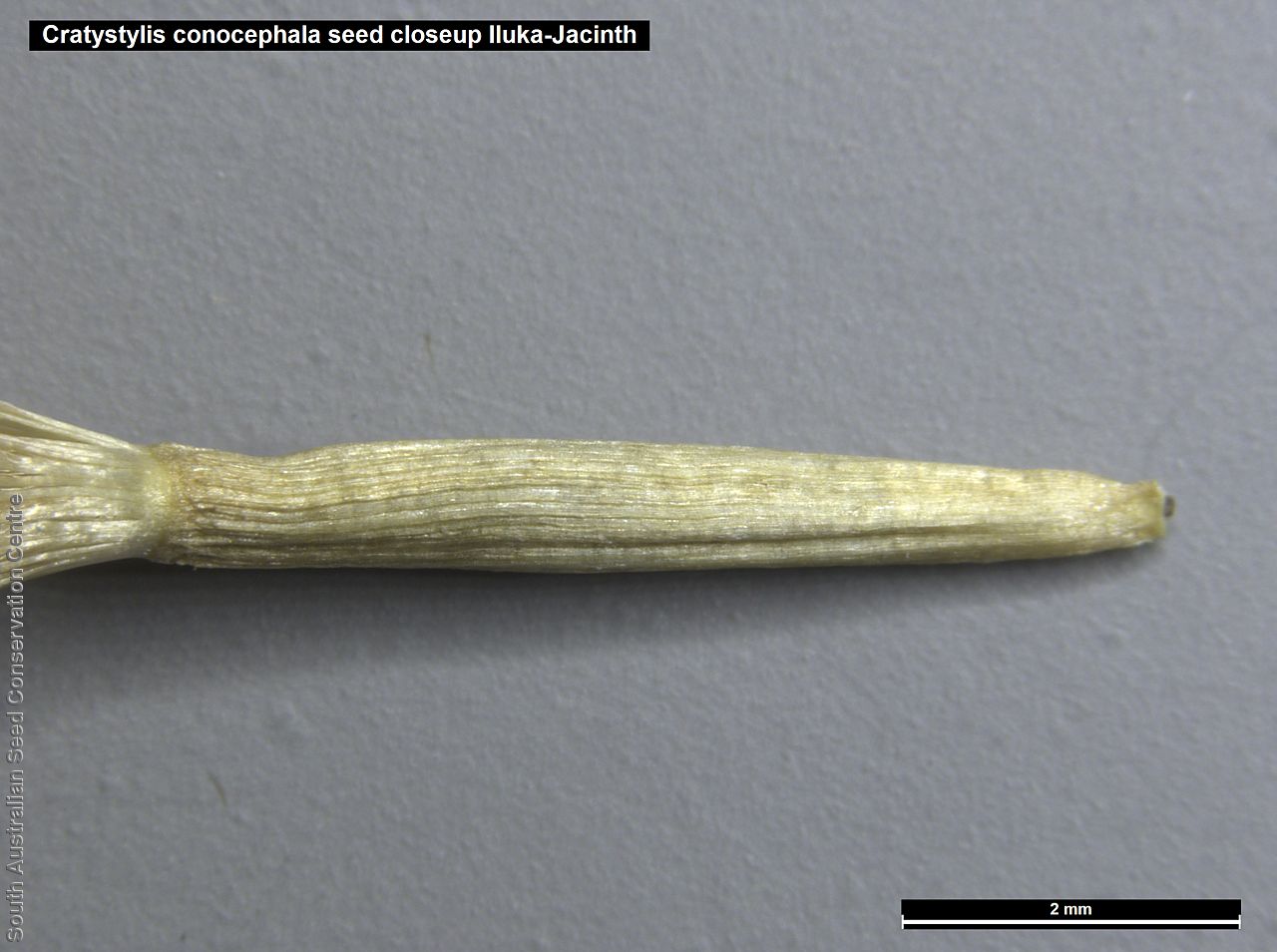

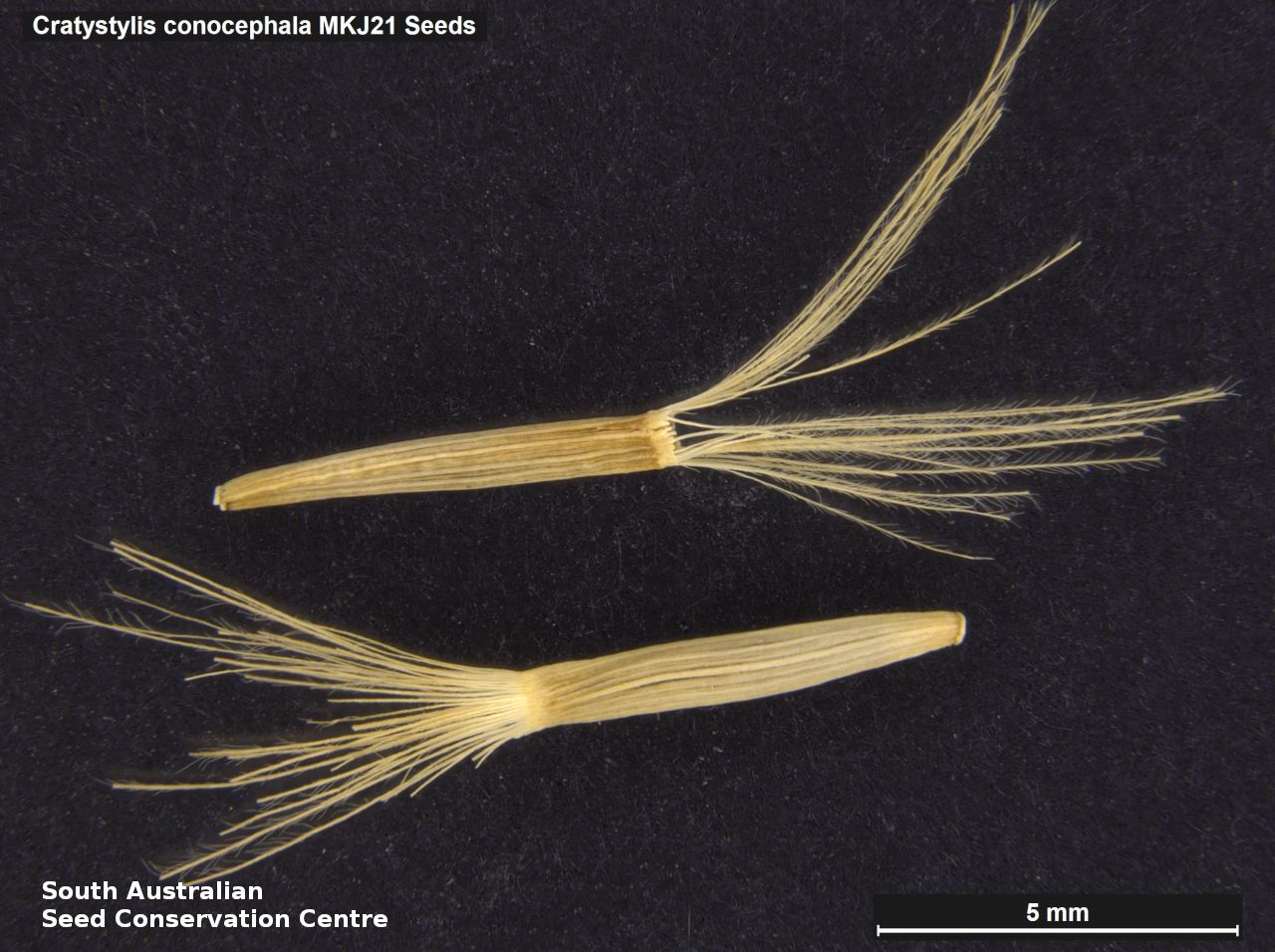


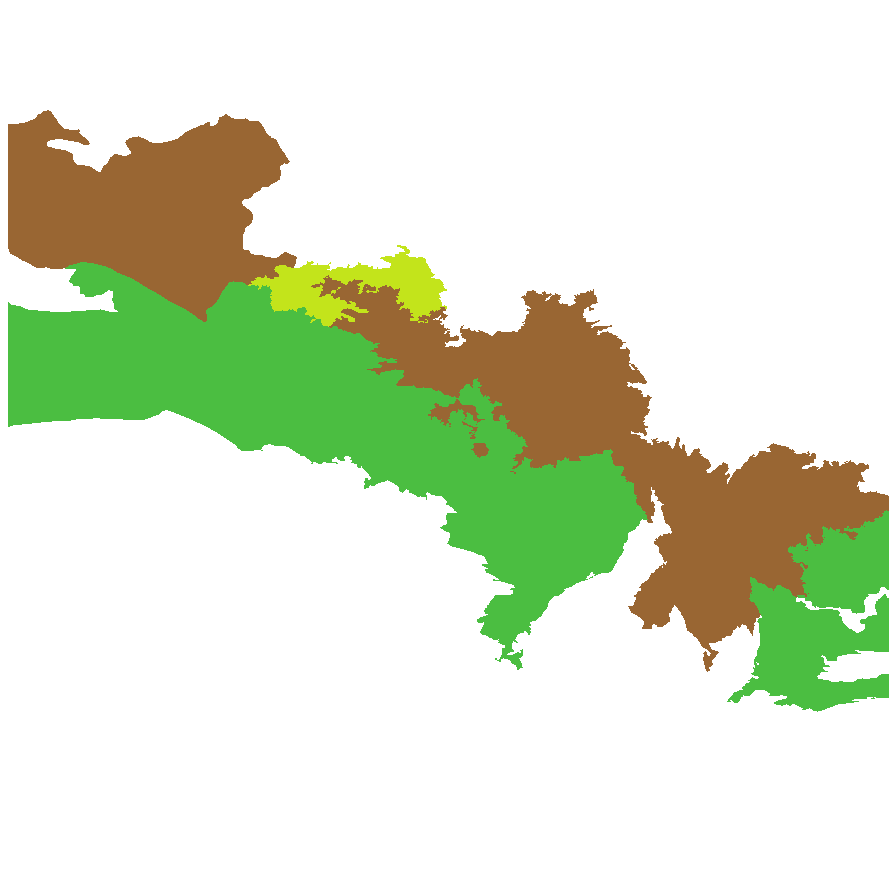
Botanical art
Prior names
Stera conocephala
Aster conocephalus
Eurybia conocephala
Pluchea conocephala
Olearia conocephala
Common names
Blue-bush Daisy
Greybush
Etymology
Cratystylis from the Greek 'cratys' meaning strong and 'stylos' meaning column, style, referring to the robust and rigid style. Conocephala from the Greek 'cono' meaning cone and 'cephale' meaning head, alluding to the cone-shaped flower-head.
Distribution and status
Found along a central band from the Nullabor to the New South Wales border growing in mallee, myall, coastal scrub and woodland on calcareous loam and sandy soils. Also found in Western Australia, New South Wales and Victoria. Native. Common in South Australia. Very rare in New South Wales and Victoria. Common in Western Australia.
Herbarium regions: North Western, Nullarbor, Gairdner-Torrens, Eastern, Eyre Peninsula, Northern Lofty, Murray, Yorke Peninsula
AVH map: SA distribution map (external link)
Plant description
Silver or blue-grey perennial shrub to 1.8 m high with erect, densely branched stems, forming a trunk with fibrous bark. Leaves obovate to cuneate to 10 mm long and 4 mm wide, with both surfaces white to grey-tomentose; midvein distinct. Flower-head terminal, solitary; sessile on leafy branchlets, with white daisy-flowers. Flowering between September and December. Fruits are pale yellow, long daisy-head. Seeds are plae bown, narrowly cylindric seed to 7 mm long, with 50-100 pappus bristles. Seed embryo type is spatulate.
Seed collection and propagation
Collect seeds between December and February. Collect seeds by picking the heads when they are turning brown and easily come away from the plant. Leave the heads in a paper bag to dry for at least a week. No further cleaning required if only heads are collected. Store the dried heads with a desicant such as dried silica beads or dry rice, in an air tight container in a cool and dry place. Seeds are non-dormant, viable seed should germinate readily. Germination 95% on 1% w/v agar, 8/16 dark/light, 15°C. See http://data.kew.org/sid
| Location | No. of seeds (weight grams) | Number of plants | Date collected | Collection number Collection location | Date stored | % Viability | Storage temperature |
|---|---|---|---|---|---|---|---|
| BGA MSB | 12,100 (24.27 g) 12,100 (24.27 g) | 68 | 21-Jan-2004 | MKJ21 Eyre Peninsula | 23-Mar-2006 | -18°C |
Number of plants: This is the number of plants from which the seeds were collected.
Collection location: The Herbarium of South Australia's region name.
% Viability: Percentage of filled healthy seeds determined by a cut test or x-ray.